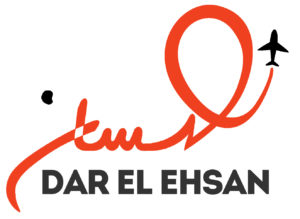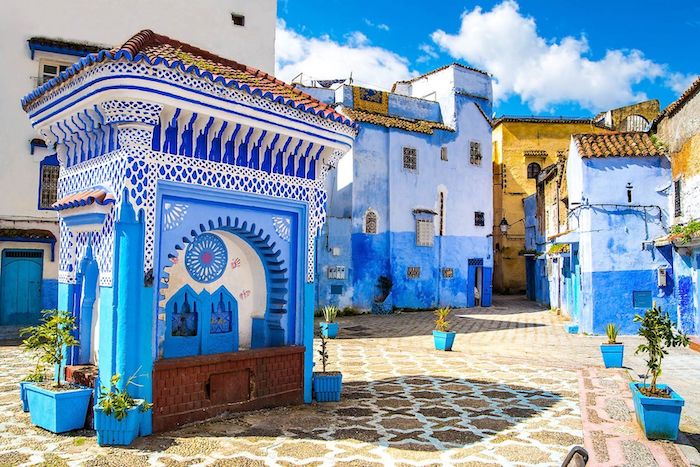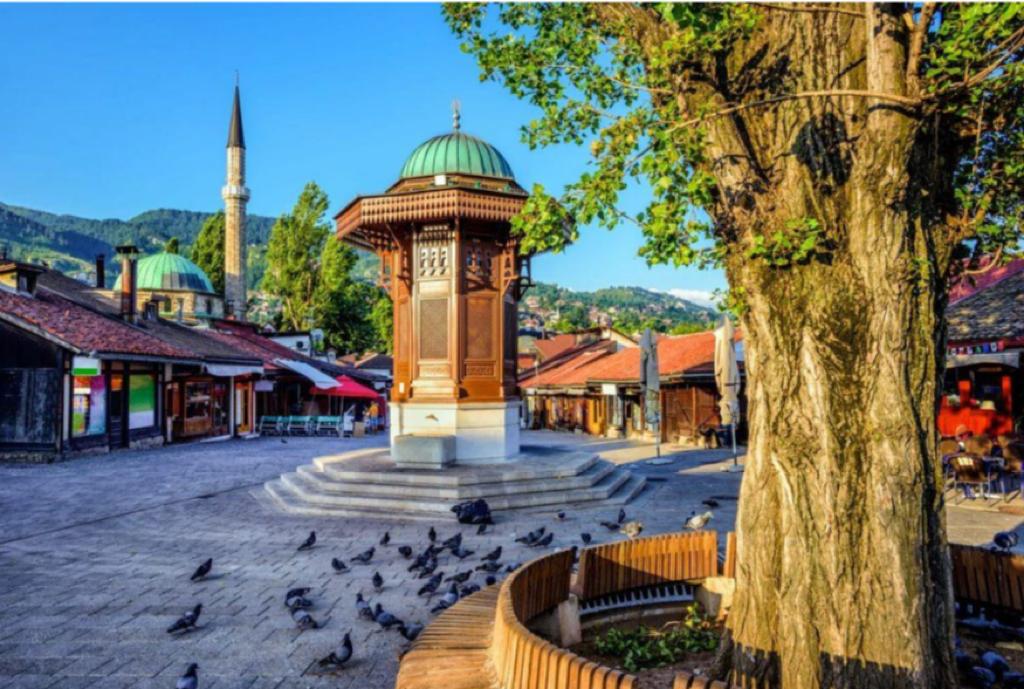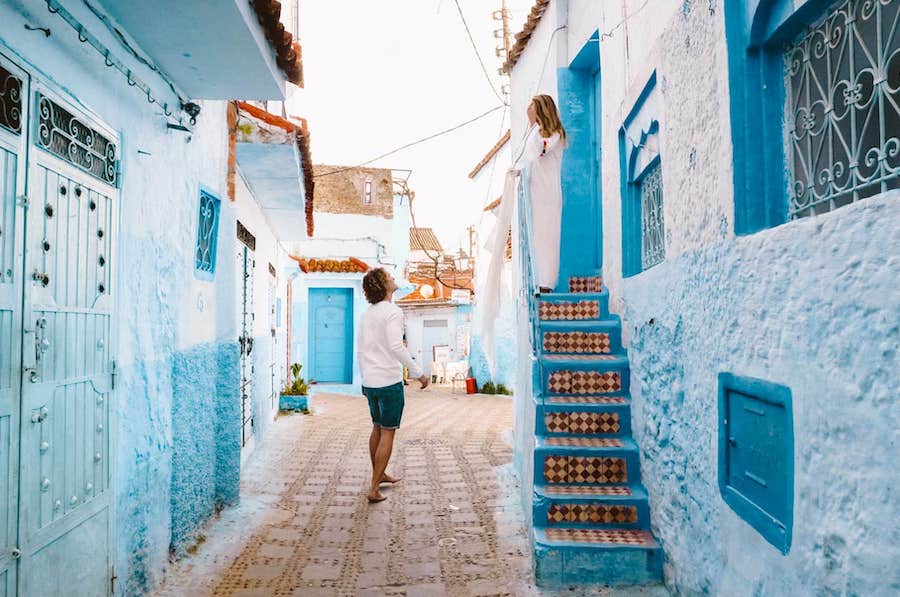Dates
| TRIP DATES | AVAILABILITY | PRICE | SPACE LEFT | |
|---|---|---|---|---|
| June 1, 2024 - June 8, 2024 | Available | $1950 |
30 Available
|
*The availability of quad prices is not consistently guaranteed. Pre-reservation for 2024 is now open, prices subject to change.
-
4-5 Stars Hotels
-
Breakfast (Half Board option is available with extra charge)
-
VIP Bus
-
English Speaking Guide
Overview
8 Days and 7 Nights
Itinerary
Arrival at Mohamed V Casablanca airport, you will be welcomed & assisted by our staff to be transferred to your hotel. Afternoon sightseeing of the economic capital of Morocco, visit of Mohammed V square, Royal palace and Habous district, the residential area of Anfa, the United Nations Square, visit Hassan II Mosque, largest Mosque in Africa, decorated with beautiful tiling of the upmost Craftsmanship, then Ain Diab Corniche. Dinner and overnight at hotel in Casablanca
After breakfast, departure to the second imperial city Rabat, the administrative capital of the
Kingdom of Morocco. your sightseeing tour includes a visit to the Mohamed V Mausoleum, the Hassan Tower, Ouadayas garden, the Mechouer, ramparts and walls surrounding the Royal palace. Continuation to Tangier. sightseeing tour of Tangier, a fascinating city interesting mix of North Africa, Spain, Portugal and France. Tangier is separated from Spain only by the 20 miles of the Strait of Gibraltar. Visit the Modern New town, a beautiful drive through rich area of Tangier’s California section where you will see the estate, villas, palaces and passing via the king’s Summer Palace and celebrities’ homes. Stop at Cap Spartel, the lighthouse that marks the official convergence of the Atlantic and Mediterranean with entrance to Hercules Cave. Then tour of the old town. Visit the Kasbah (fortified area). Descend through the labyrinthine roads of the medina through the spice markets. Visit the Grand Socco and St. Andrew’s Church, quietly nestled off the busy market square. Dinner and overnight at hotel in Tangier.
After breakfast, departure to Chefchaoun, a small charming city was conquered in 1920 by the Spaniards. The clean and fresh air invites you to spend some time to discover the beauty of the place. Nestled high in the Rif Mountains, Chefchaouen is famous for its buildings washed in bright shades of blue – this is undeniably one of the world’s prettiest cities. You will have the opportunity to take pictures of a panoramic view of the Hispanic flavored town lined with blue and white washed houses, tiny balconies, tiled roofs and patios embellished with citrus trees. Dinner and overnight at hotel in Chefchaouen.
Departure to the Imperial city of Meknes known as the “Moroccan Versailles” and founded in the 17th century by King Moulay Ismail. Meknes is famous for its 25-milelong walls. There are numerous historic sites to see and here we name but a few; The massive gate of Bab Mansour, The Bassin de L’Agdal a massive 400m x 100m pool dating back some 300 years. The Mausoleum of Moulay Ismail is one of only three Moroccan shrines that non-Muslims can visit. Continuation to Fes via the countryside and the foothills of the Rif Mountains. Dinner & overnight at hotel in Fes.
Fes was founded in the 9th century and home to the oldest university in the world, Fez reached its height in the 13th–14th centuries under the Merinids, when it replaced Marrakech as the capital of the kingdom. The urban fabric and the principal monuments in the medina – madrasas, fondouks, palaces, residences, mosques and fountains – date from this period. Although the political capital of Morocco was transferred to Rabat in 1912, Fez has retained its status as the country’s cultural and spiritual centre.
Artisan workshops in the medina are as active today as 100 years ago, and strongly contribute to the city’s industrial economy. Trades such as metal and leather working, ceramics, silk, tapestries, and sculpting are still practiced in these workshops. Original ramparts still protect the ancient city and its’ 9000 passageways and narrow streets.
Your sightseeing tour will include the following:
The Medersa
This theological college, marked by its green tiled roof, is a prime example of Merinid architecture, and it’s the most beautiful of Kairaounie University’s residential colleges. Inside, elegant calligraphy graces the ceramic tile walls. The marble floors, sculpted cedar, and carved stucco walls—made with a concoction of plaster and egg white—have held up since this masterpiece Medersa was built in 1350. Since it is still in use, non-Muslims must depart during prayer time.
Bab Boujloud
Constructed in 1913, this gate is about 1,000 years younger than the buildings behind it. It’s
proof that age doesn’t matter—the relatively youthful structure is the most strikingly beautiful entry point into the old city. Painted flowers and calligraphy embellish its outer blue ceramic tiles and, depending on one’s interpretation, the green mosaic interior either represents peace or the official color of Islam.
The Splendid fountain at Place Nejjarine
The square, with its splendid and unusual fountain, takes its name from the Souk Nejjarine (Carpenter’s Souk) which is situated behind a wooden door in a narrow street below the square
The Mellah
The Jewish Quarter. The Jews lived here and received protection from the sultan. The main street is especially interesting with its balconies and Art Deco zellij mosaic. Most Jews in Fez (around 300) now live in the Ville Nouvelle. Visit of the Ibn Danan Synagogue, a recently restored 17th century synagogue.
Souks
The souks of Fez are located in the ancient city center, the medina. Merchants selling the same sort of products are generally grouped together in their own “souk”. The tiny alleyways are crowded with the tiny boutiques on both sides The henna and wood working souks are located in the Nejjarine neighborhood and the scent of cedar is everywhere. The main plaza is planted with trees and provides a shaded haven from the warm sun. Various natural products derived from henna are sold here. Nejjarine is also where the fabric dyers are located. You simply should not miss El Attarine, the spice souk. Without question, this souk is the most colourful in Fez.
New Medina
The “nouvelle Ville” of Fez, or the new city, provides a startling contrast with Fès el Bali. Wide and elegant avenues are lined with numerous cafés and restaurants. The modern aspect of the new city highlights the economic differences of the suburbs and the city center.
departure to Marrakech passing by the berber village of Immouzer Kandar and Ifrane and arrive to Beni Mellal. It sits in the foot of Mount Tassemit and is one of the agricultural centers of Morocco. Continuation to Marrakech, arrive late afternoon to Marrakech. Dinner & overnight at hotel in Marrakech.
After breakfast, your guide will meet you at the hotel for full day guided tour of Marrakech. Marrakech was founded in 1062 by one of the chieftains of the Almoravid king Youssuf Ibn Tashfin. The Almoravids were desert warriors, very much attached to their Islamic religion; the original garrison developed very quickly into a city where numerous mosques and madrasas (Koranic schools) were built. Andalousian craftsmen built and decorated several palaces, merging their style with the Saharan and African traditions, which gave the city a distinctive architectural flavour.
Nowadays, Marrakech is a vibrant city which exhibits a curious blend of the ancient and the modern, allowing travellers the chance to experience the genuine medieval atmosphere of the old medina, and visit the trendiest bars, art galleries and restaurants in the French Quarter, Guéliz, built at the beginning of the 20th Century, all in one day.
Highlights of your visit will include:
El Bahia Palace
Built in the late 19th Century, and decorated by the best artisans of Morocco at the time, this palace – intended to be the most magnificent of its age – features an exquisite blend of Andalousian and Moorish styles. Specially interesting are the harem apartments, the trapezoidal garden, and a huge tiled courtyard with fountains.
Saadian Tombs
Built in the 16th Century as mausoleums for some Saadian rulers and their families, the Saadian Tombs were unknown of until they were discovered by the French in 1917 thanks to aerial photographs. The site comprises more than one hundred graves, distributed in 3 mausoleums whose decoration exemplifies Islamic architecture with floral motifs, calligraphy, zellij and carrara marble, and finely worked cedar wood and stucco. Outside the buildings are a garden and the graves of soldiers and servants.
The Koutoubia Mosque
Built by the Almohads in the late years of 12th Century, the Koutoubia Mosque, and specially its minaret, is the most important landmark of Marrakech, and a symbol of the city itself. The minaret served as model for the Giralda in Sevilla and the unfinished Tour Hassan in Rabat, all three being designed by the same architect. Koutoubia means ‘booksellers’, as the trade of books was concentrated in the neighbourhood during the Middle Ages. The minaret of the Koutoubia, 77 meters high, is visible from almost any point of the city – an old ordinance, still in force, forbids any building of Marrakech to surpass the Koutoubia minaret in height.
Djemaa El Fna, the Square
Nobody knows for certain of the origin of this square, whose name evokes, in Arabic, the contradictory notions of assembly or gathering, and that of absence. Probably as old as the city itself, it was a place for public executions during the day, and the meeting point of musicians, mystics, food sellers, pickpockets, acrobats, snake charmers, storytellers, dancers, fortune tellers and other exotic characters at night (happily enough, nowadays it only retains its more playful aspect). Watching sunset from one of its terraces when the call to prayer from the Koutoubia minaret fills the air is one of these ‘zen’ moments that Morocco offers – do not miss it!
Despite its lack of significant monuments, Djemaa el Fna became an UNESCO Heritage Site in 1985, as one of the last places in the world where old oral narratives are still enacted.
The Souks
Filling the alleys north of Djmaa el Fna is the souk, or traditional market – the largest one in Morocco. It is, in turn, subdivided in some 18 souks, each one of them devoted to a specific trade or craftsmanship – from spices or ironwork, to the ingredients necessary for casting magic spells. The number of shops – often not much bigger in size than a closet – is overwhelming, and in them Moroccans can indulge in one of the activities that they enjoy most: bargaining. Cunning, patience, sense of humour, and strategy are needed for the game. Try your skills at it!
After breakfast, transfer to airport for departure.
Package Includes
- 1- Turkish Airlines Flights.
- 2- Hotels 4-5 stars.
- 3- Half Board meals.
- 4- Group transportation.
- 5- Half Board option available (extra charge)
- 6- Daily tour in private bus according to itinerary.
- 7- All tours mentioned in program.
- 8- English speaking tour guide.
- 9- All taxes.
- 10- All other gateway flights available (extra charge)
- 11- Monument fees as mentioned in the Itinerary (Hassan II Mosque, Hercule Grotto, Volubilis, Medersa bouanania, Bahia Palace, Saadiens Tombs)
Package Does NOT Includes
- 1- Hotel extra costs (minibar, smoking penalty, damage…)
- 2- Any tours outside above itinerary.
- 3- PCR Cost.
- 4- Ticket for attractions.
- 5- Phone Sim-card not included SA and other destinations
- 6- Personal shopping
- 7- Tips for guide and driver
- 8- Travel and medical insurances
- 9- Tips for porters
- 10- Soft drinks during meals (water, soda, Jus, etc…)
- 11-Any other services not mentioned in the itinerary
FAQs
Check in time 14:00 and the check out is 12:00 depending on hotel policy.
In case that any hotel rules are broken (smoking fee, property damages) we are not responsible, and hotel remains the right to charge from the guests directly.
Dare El-Ehsan Travel has the right to change and modify the itinerary and the flights without prior notice.





Write a Review